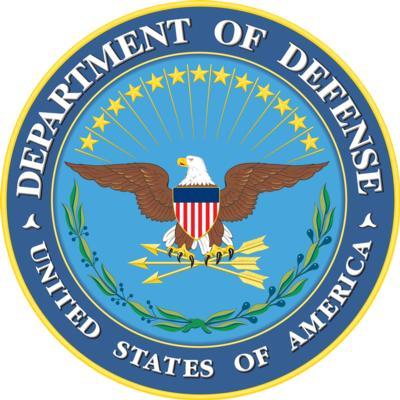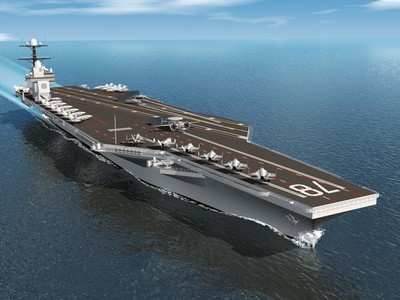Cancers Disproportionately Prevalent Among Air and Ground Crews
A study undertaken by the Pentagon has identified worryingly high rates of cancer among U.S. military pilots and aviation support personnel—such as aircraft maintainers, fuelers, and those responsible for launch and retrieval operations aboard U.S. Navy aircraft carriers.

The data—long-sought by retired military aviators who’ve persistently raised alarms vis-à-vis the disproportionately high incidence of cancer among themselves and their air and ground crew comrades—contradicts former Pentagon assertions that personnel engaged in military flight operations are at no greater cancer risk than the general U.S. population.
Following a year-long study of almost 900,000 service members who flew, otherwise crewed, maintained, or otherwise supported military aircraft between 1992 and 2017, the Pentagon determined that air crew-members manifested an 87-percent higher rate of melanoma and a 39-percent higher rate of thyroid cancer than the U.S. statistical mean. What’s more, male and female air crew-members respectively suffered rates of prostate and breast cancer 16-percent higher than the U.S. average. Overall, U.S. military air crews suffered a general cancer rate 24-percent higher than the U.S. mean for their respective demographics.
U.S. military ground crews suffered rates of brain and nervous system cancers 19-percent higher, rates of thyroid cancer 15-percent higher, and rates of kidney and renal cancers nine-percent higher than the nation’s statistical mean. Female military ground crew personnel suffered a rate of breast cancer seven-percent higher than the U.S. national average. Overall, U.S. military ground crews suffered a general cancer rate three-percent higher than the U.S. statistical mean.
Strangely, U.S. military personnel serving in both air and ground faculties suffered significantly lower rates of lung, bladder, and colon cancers than the U.S. average.
The Pentagon set forth that the new study was among the largest and most comprehensive to date. A former U.S. Department of Defense (DOD) oncological study focused solely upon Air Force pilots identified higher rates of cancer among that admittedly small population. The recent study, conversely, took into account flight and ground personnel across all U.S. military branches.
Pentagon officials cautioned that actual cancer rates among military aviators and support personnel are likely higher than indicated by the recent study. The disparities were attributed to gaps in the data sets upon which subject study was predicated. A Pentagon spokesperson stated researchers would work to remedy variables for purpose of garnering more accurate information.

Retired USAF Colonel Vince Alcazar—a member of the Red River Valley Fighter Pilots Association which has lobbied the Pentagon and Congress to more assertively address the matter of cancer among U.S. military veterans—stated the study: “proves that it’s well past time for leaders and policy-makers to move from skepticism to belief and active assistance.” Alcazar serves on the association’s medical issues committee.
The discovery of atypically high cancer rates among servicemen tasks the Pentagon with conducting even more comprehensive investigations with the ultimate objective of determining why U.S. military flight and ground-crew personnel are falling ill.
Isolating potential causes for specific pathologies is a complex business, and the Pentagon was careful to note that the recent study “does not imply that military service in air crew or ground crew occupations causes cancer, because there are multiple potential confounding factors that could not be controlled for in this analysis.” The Pentagon’s equivocation alludes to datum such as family history, smoking, and alcohol use.
For years, U.S. military aviators and groups representing such have petitioned the Pentagon to critically examine hazards peculiar to their workplace environments—such as jet fuel, high and low-flow Prist, hydraulic fluids, solvents, jet exhaust, and the massive radar and sensor emissions of modern combat aircraft and the naval vessels and terrestrial installations from which they’re operated.
Betty Seaman, widow of late U.S. Naval aviator Captain Jim Seaman, stated her husband would return from deployment reeking of jet fuel. An A-6 Intruder pilot, Captain Seaman succumbed to lung cancer in 2018 at the relatively young age of 61. Mrs. Seaman retains her late husband’s flight gear, which even after years of storage, smells strongly of jet fuel, “which I love,” she remarked.
Mrs. Seaman and others so bereaved suspect a link exists between their loved ones’ premature deaths and the conditions in which they lived and worked while on duty. Mrs. Seaman disclosed that her husband and his contemporaries would discuss how even their ship’s potable water systems smelled of jet fuel.
Finally seeing risks she’d long-suspected extant reflected in empirical data has elicited mixed emotions in Mrs. Seaman, who stated: “It [the newly-gleaned data] has the potential to do a lot of good as far as early communication, early detection.”
The Pentagon study found that military aviators—owing largely to the regular physical examinations they’re required to undergo as a prerequisite to maintaining active flight status—were more likely than the general U.S. population to have cancers diagnosed early and, therefore, more likely to survive such afflictions than their civilian counterparts.
The military health system database referenced in the Pentagon study lacked reliable cancer data prior to 1990. Ergo, the study did not include pilots who flew early-generation tactical aircraft. Furthermore, as the study included cancer data from neither the Department of Veterans Affairs nor state cancer registries, it failed to take into account military flight and ground-crew personnel diagnosed with cancer after they’d left the military medical system.
“It is important to note that study results may have differed had additional older former service members been included,” the Pentagon conceded.

The Pentagon cancer study will presently enter a second phase in which data from older registries will be included and attempts to isolate the causes of various morbidities will be made. The aforementioned 2021 defense bill requires the U.S. Department of Defense (DOD) to not only to identify “the carcinogenic toxicants or hazardous materials associated with military flight operations,” but to also determine the type of aircraft in which and locations where diagnosed crew-members served.
Prior to his passing, Mrs. Seaman asked her husband if—knowing his impending death was likely linked to his Naval service—he would have steered his life along a different path.
“I flat-out asked Jim,” Mrs. Seaman related. “And he, without hesitation, said, ‘I would have still done it.’”
 ANN's Daily Aero-Linx (04.17.24)
ANN's Daily Aero-Linx (04.17.24) ANN's Daily Aero-Term (04.17.24): Jamming
ANN's Daily Aero-Term (04.17.24): Jamming ANN's Daily Aero-Linx (04.18.24)
ANN's Daily Aero-Linx (04.18.24) Aero-News: Quote of the Day (04.18.24)
Aero-News: Quote of the Day (04.18.24) ANN's Daily Aero-Term (04.18.24): Hold-In-Lieu Of Procedure Turn
ANN's Daily Aero-Term (04.18.24): Hold-In-Lieu Of Procedure Turn





